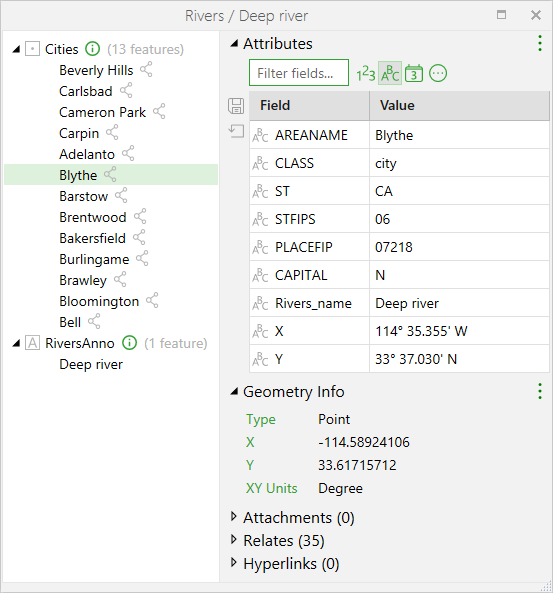

*By default in ArcGIS for Desktop, short integers are created with a precision of 5. Use this table to help you choose data type, precision, and scale: Data typeġ–5 (Oracle, SQL Server, PostgreSQL, Netezza) 5 (DB2, Informix)Ħ–10 (Oracle and PostgreSQL) 6–9 (DB2, Informix, Netezza, and SQL Server) On the other hand, if you specify a float with a precision of 5 and a scale of 3, the field would let you enter 12.345.ĭata types and their possible precision and scale values are listed in the following table. If you try to enter 12.345 into the field, an error message would display, as this exceeds the maximum number of digits and decimal places allowed. For example, if you specify a float with a precision of 4 and a scale of 2, the field will accept 12.34. Specifying the precision and scale allows you to restrict the range of values and number formats a field can accept, giving you greater control. If you're specifying numeric fields for a database or enterprise, workgroup, or desktop geodatabase, also specify the precision (the maximum length of the field) and scale (the maximum number of decimal places). If you're specifying numeric fields for a table in a file or personal geodatabase, you need only specify the data type. Numeric values with fractional values within specific rangeĭouble (double-precision floating-point number) Numeric values without fractional values within specific rangeįloat (single-precision floating-point number) Numeric values without fractional values within specific range coded values Ranges differ slightly in databases and enterprise, workgroup, and desktop geodatabases. The ranges listed are for file and personal geodatabases. The following table lists data types, their ranges, and storage requirements. If you need to store fractional numbers between -3.4E38 and 1.2E38 only, specify the float data type, because it takes up 4 bytes, whereas the double data type takes up 8. If you need to store integers between -32,768 and 32,767 only, specify the short integer data type, because it takes up only 2 bytes, whereas the long integer data type takes up 4. This will not only minimize the amount of storage required but will also improve performance. Secondly, when choosing between a short or long integer or between a float or double, choose the data type that takes up the least storage space. If you need to store fractional numbers that have decimal places, such as 0.23 or 1234.5678, specify a float or a double. If you just need to store whole numbers, such as 12 or 12,345,678, specify a short or long integer.

In choosing the data type, first consider the need for whole numbers versus fractional numbers.

#Arcgis 10.3 identify pro#
XTools Pro 11.1 can be installed and used with the new ArcGIS 10.3 Here is a list of all improvements we're about to release and tell you more about next month, in January 2015: Let's take a closer look at what’s on the way in 11.1


 0 kommentar(er)
0 kommentar(er)
